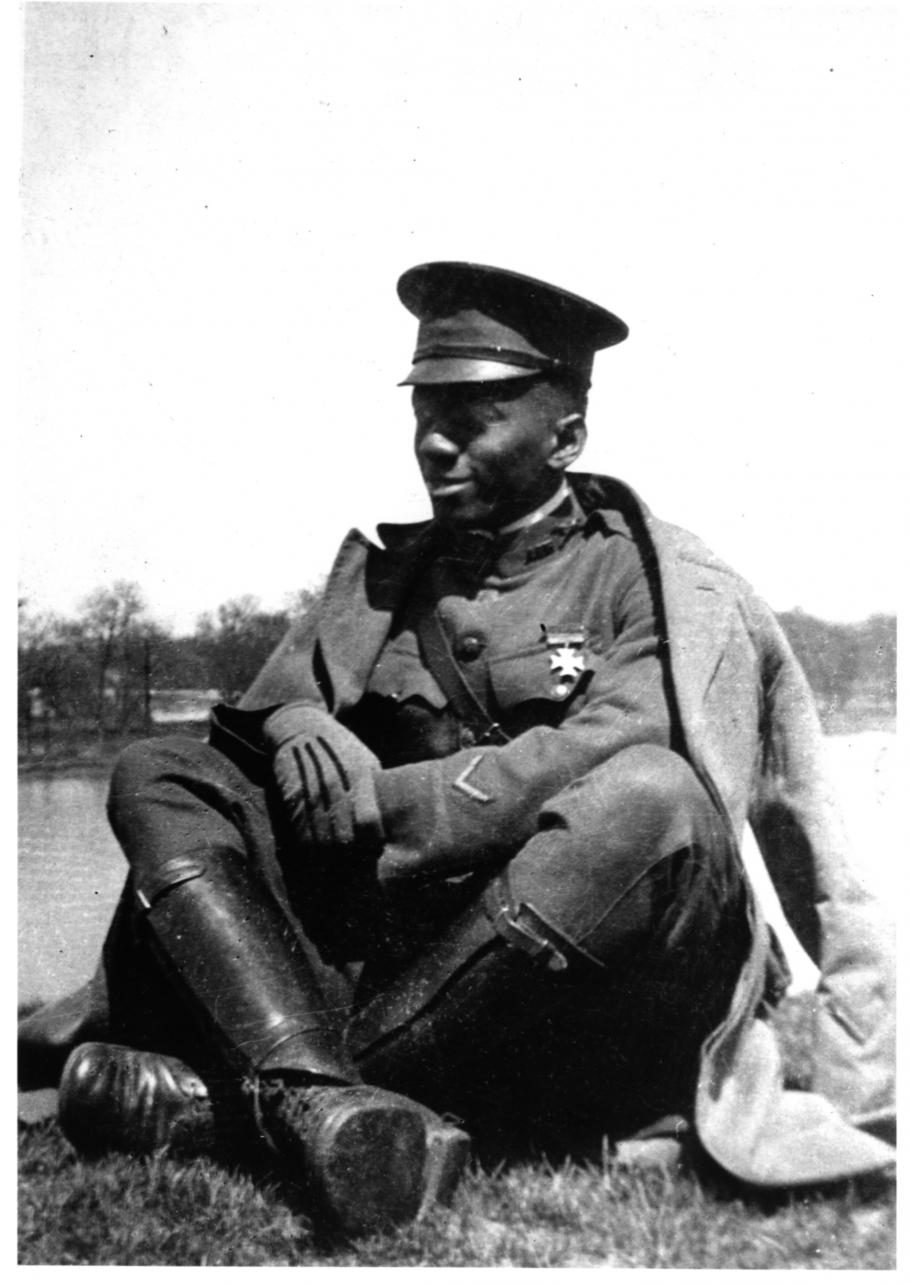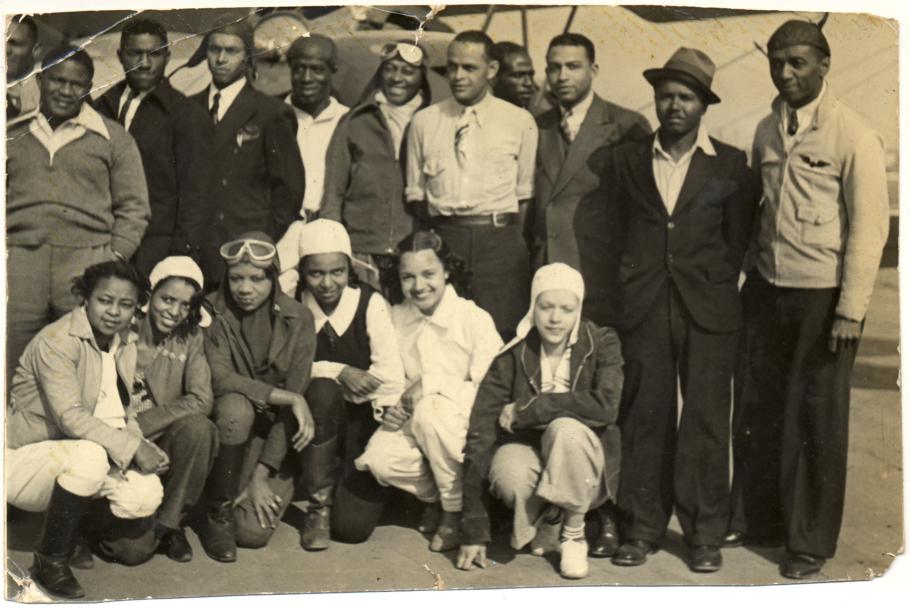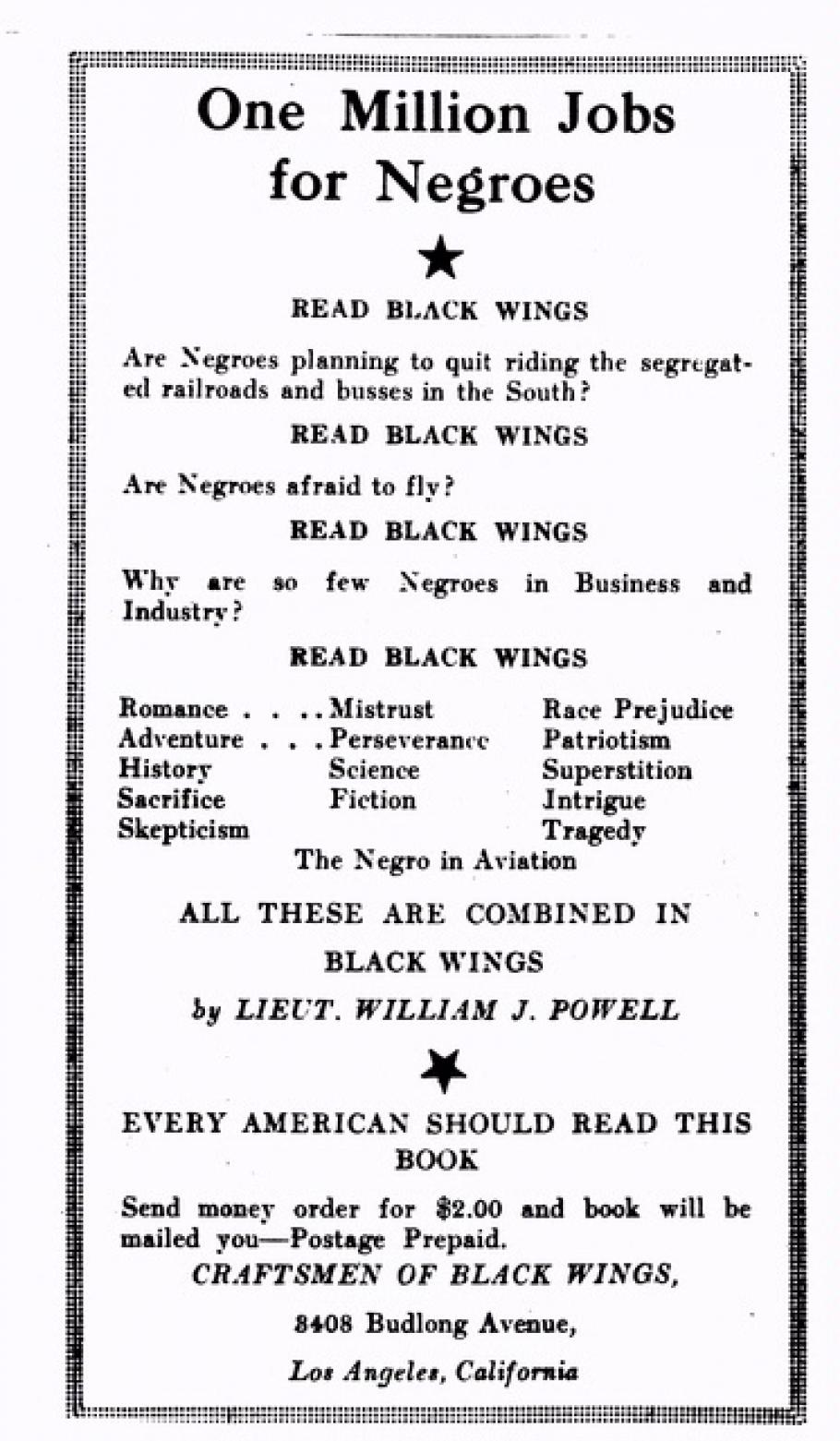When African American pilot, engineer, and entrepreneur William Powell was a young adult, even the skies were segregated. Many would-be African American pilots, such as first licensed African American pilot Bessie Coleman, were forced to go to France for pilot training and licenses issued by the Fédération Aéronautique Internationale. According to a June 12, 2012 article in the online publication, Air Facts, in 1934 there were only 12 African Americans out of 18,041 pilots in the U.S., and out of 8,651 licensed mechanics, just two were African Americans. Airlines wouldn’t even allow African Americans as passengers. Powell set out to change that, becoming one of the most extraordinary figures in the Golden Age of Flight (1920s and 1930s) in the process. Only an early death brought his career as an aviation pioneer to an end.
Born in 1897, Powell grew up in a middle-class African American neighborhood in Chicago. He was a talented student working toward an electrical engineering degree at the University of Illinois when World War I broke out. He enlisted in the U.S. Army, and served as a lieutenant in the racially segregated 317th Engineers and the 365th Infantry Regiment. He returned home after being exposed to poison gas and finished his engineering degree.
After graduation, he opened several successful gas stations and auto parts stores on the south side of Chicago, but sharing his generation’s infatuation with Charles Lindbergh and flight, he dreamt of going up in an airplane. In 1927, while attending a reunion with American veterans in Paris, France, he got his chance. Powell visited le Bourget Airport, the very place where Lindbergh had landed a few months earlier to conclude his solo flight across the Atlantic. A pilot took him on a tour over the city and he was quickly hooked on flying, making it his goal to become a pilot.
Doing so wouldn’t be easy. Flight school after flight school rejected him because of his race. He tried enlisting in the Army Air Corps, but was also turned down. He could have gone to France to train, but preferred getting licensed in his own country. Finally, in 1928 he was accepted at a flight school in Los Angeles, whose students were a mix of nationalities from across the globe. He sold his businesses, moved to California with his family, handed over the $1,000 tuition, and took to the skies. He received his pilot’s license in 1932.
Powell’s quest to become a pilot wasn’t the only thing that consumed him, however. He wanted to create opportunities for African Americans in aviation. He saw this budding industry as a way for African Americans to pull themselves out of the Great Depression. “I actually believe that with the proper leadership, Negroes can be systematically trained to the use of the airplane to such an extent that a great airplane industry might spring up,” Powell wrote in his book, Black Wings.
To this end, he helped form an aviation organization in 1929, naming it the Bessie Coleman Aero Club in tribute to the pioneering pilot who had died in an airplane accident in 1926. The club welcomed anyone, including women, but the members were almost all African Americans. Powell organized the first all-African American air show in 1931, which drew 15,000 attendees.
Powell used many other methods to encourage African Americans to enter the aviation field. He started the Bessie Coleman Flying School; made a movie about a young man who wanted to fly; published a monthly journal about African American aviation; offered scholarships to African American students; and founded Bessie Coleman Aero, the first African American-owned airplane manufacturer. He was aided by many celebrities such as Duke Ellington and Joe Louis, who lent their names and donated money to the cause.
Lastly, Powell wrote a book, Black Wings, which was published in 1934. A thinly-veiled autobiography, it told of his own struggle and that of other African Americans to become pilots through the eyes of the fictional character, "Bill Brown.” He used real events and individuals as the basis, and provided portrayals of early African American pilots such as Hubert Fauntleroy Julian, James Herman Banning, and C. Alfred Anderson. He urged African American youth "to fill the air with black wings." He encouraged them not only to be pilots but also airplane mechanics, aeronautical engineers, aircraft designers, and industry businessmen. Powell was firmly convinced aviation was filled with new opportunities for African American youth. He wrote, “There is a better job and a better future in aviation for Negroes than in any other industry, and the reason is this: aviation is just beginning its period of growth, and if we get into it now, while it is still uncrowded, we can grow as aviation grows.”
The front cover and inside flap of the Museum’s copy of Black Wings, by William Powell. On the inside is a photo of Bessie Coleman, to whom he dedicated the book.
Smithsonian Books republished Black Wings in 1994 as Black Aviator: The Story of William J. Powell, with new photos and historical background, plus an introductory essay by then-National Air and Space Museum Aeronautics Curator Von Hardesty. Used copies can still be found online.
Powell died in 1942 at age 45, his early death possibly brought on by after-effects of his exposure to poison gas in WWI. He had paved the way for hundreds of African Americans to enter the field of aviation. While discrimination was still rampant at the time of his death, he did live to see black aviators known as the Tuskegee Airmen play a vital role in World War II.
For more information on African Americans in aviation, read Black Wings: Courageous Stories of African Americans in Aviation and Space History by Von Hardesty and Dominick Pisano, or visit the Museum’s online exhibition on African Americans in aviation.



